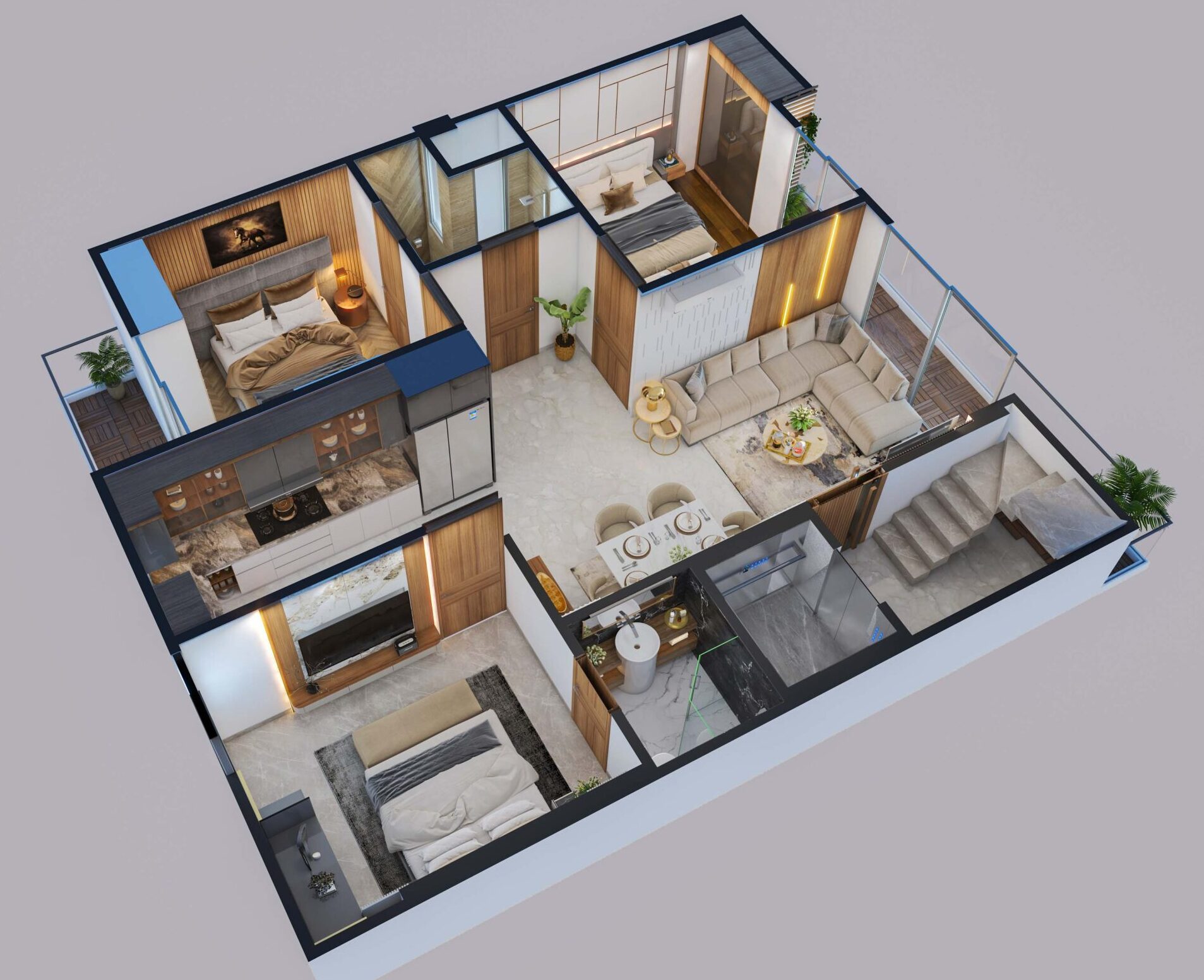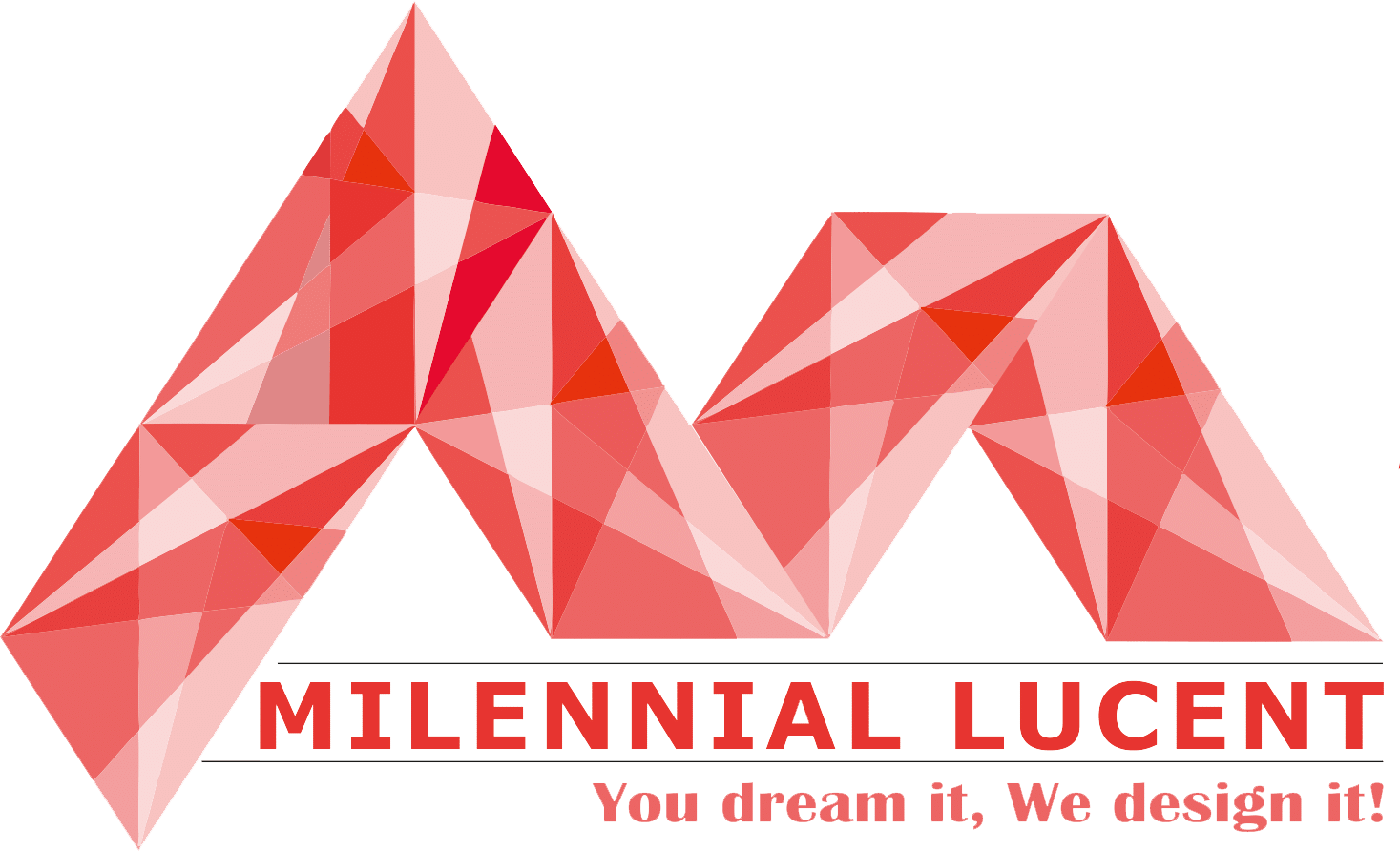your dream it, we design it!

Visual 3D technology has revolutionized the way we perceive and interact with spaces, especially in fields like architecture, interior design, and gaming. By creating highly realistic three-dimensional models, this technology allows designers and clients to explore and visualize spaces in a dynamic and immersive manner. It enhances understanding and communication by providing a detailed, interactive representation of environments, enabling better decision-making and more accurate planning. Whether it’s a walkthrough of a proposed building, a virtual tour of a newly designed home, or an immersive game environment, visual 3D technology bridges the gap between imagination and reality.
Visual 3D technology comes in a variety of forms and applications, each with unique uses in diverse industries.
1.3D Modeling:
3D modeling is the process of creating a three-dimensional representation of any object or surface using specialized software. It begins with basic geometric shapes, known as primitives, such as cubes, spheres, and cylinders. These shapes can be manipulated and refined through techniques like extrusion, subdivision, and Boolean operations to form more complex structures.
Artists can further add intricate details using digital sculpting tools, much like sculpting clay in the physical world. Texturing, which involves applying 2D images onto the 3D surface, gives the model color and surface detail.
This process, known as UV mapping, ensures textures are accurately applied, enhancing the realism of the model. The entire workflow takes place within a coordinate system, usually the Cartesian system, which defines the position of points in space using X, Y, and Z axes.
2.3D Rendering:
The process of turning a three-dimensional model into a two-dimensional picture with realistic lighting, texturing, and shading is known as 3D rendering. This entails modeling the interactions between light and objects in a scene, taking into consideration different aspects such as refractions, reflections, and shadows.
This 3D data is processed using rendering software, such Blender, Arnold, or V-Ray, to create a high-quality image or animation. For real-time applications like video games, this can be accomplished through intricate computations, or it can be done in real-time for photorealistic results used in product designs, architectural visualizations, and motion pictures.
The aim of 3D rendering is to produce graphics that are as realistic as possible, offering a picture that successfully conveys the design objective.
3.3D Animation:
The process of modifying three-dimensional models inside a digital environment to create moving visuals is known as 3D animation. There are multiple steps involved in this process, which begins with the construction of 3D models and their skeleton structure for mobility.
The software then interpolates the frames in between to provide smooth motion after animators add keyframes, which specify the beginning and finishing locations of any movement.
Real-world movements can also be captured using sophisticated methods like motion capture and applied to 3D characters. Characters, settings, and stories are brought to life in a dynamic and captivating fashion through the widespread usage of 3D animation in movies, television shows, video games, and virtual reality.
4.Virtual Reality (VR):
In the use of virtual reality (VR), users may explore and communicate with a world in three dimensions as if they were actually there. VR is an immersive technology that simulates an environment. VR headsets that track the user’s head motions to alter the viewpoint in real-time, such the Oculus Rift or VR from HTC, are used to do this.
VR allows users to intuitively traverse the virtual area and manipulate things with the use of motion controllers. Virtual reality (VR) is used in many domains, such as gaming, education, training simulations, and virtual tours.
It provides extremely immersive and frequently indistinguishable experiences from reality. VR improves comprehension, education, and pleasure by submerging users in a completely interactive world. This makes it a potent tool for both work and play.
5.Augmented Reality (AR):
By the use of electronics like smartphones, tablets, or AR glasses, users may overlay digital content—such as photos, videos, and 3D models—onto the physical world. This technology is known as augmented reality (AR).
AR apps employ cameras and other sensors to identify the actual world and overlay virtual features. This enables users to see and interact with both the real and virtual worlds at the same time. Through the addition of interactive elements and contextual information, this technology improves the user’s impression of reality.
Virtual try-ons in retail, interactive learning experiences in education, real-time directions in navigation, and entertainment through games like Pokémon GO are just a few of the industries that make extensive use of augmented reality (AR). Augmented Reality (AR) produces a rich, interactive experience that improves user functionality and engagement by fusing digital content with the real environment.
6.3D Visualization:
The process for creating graphical content with 3D

